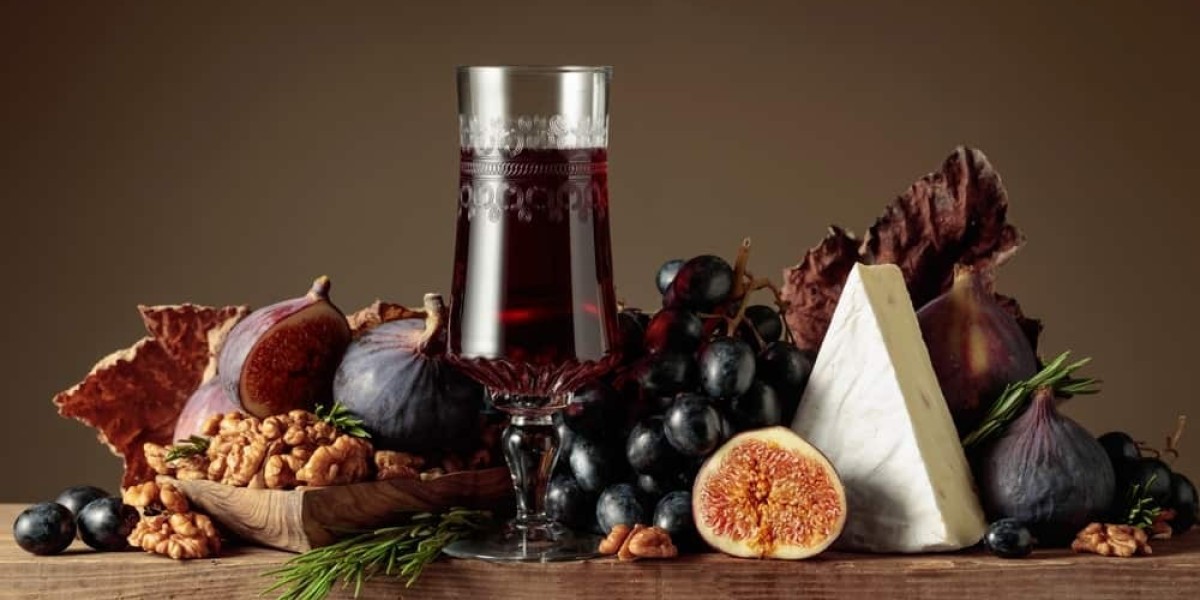The dessert wine market has long been associated with luxury and indulgence, with iconic varieties like Sauternes, Tokaji, Port, and Ice Wine leading the charge. However, as consumer tastes evolve and global trends shift, the dessert wine sector is undergoing significant transformation. Innovation is driving new product offerings, catering to a broader audience while also enhancing the premium nature of these wines. From health-conscious alternatives to creative production methods and sustainability initiatives, dessert wine innovation is shaping the future of this lucrative segment.
1. Health-Conscious Dessert Wines
As consumers become increasingly health-conscious, there is a growing demand for wine options that fit better into a balanced lifestyle. Dessert wines, traditionally known for their rich sweetness and high sugar content, are responding to this trend by offering lower-sugar and lower-calorie alternatives. These innovations are aimed at attracting health-conscious consumers who still want to indulge in luxurious flavors without the guilt.
Producers are experimenting with semi-dry and low-sugar dessert wines, balancing the sweetness with acidity to create a wine that is still flavorful but less intense. These wines allow for a more nuanced experience without overwhelming the palate with sugar. Additionally, the use of naturally occurring grape sugars, rather than added sugars, is helping producers create healthier dessert wines that maintain their complex profiles while aligning with modern consumer preferences.
Sparkling dessert wines have also gained traction as an alternative to traditional still dessert wines. With a lighter, more refreshing taste and fewer calories, sparkling options like Moscato d’Asti are becoming popular for their ability to pair well with a variety of desserts while offering a more approachable sweetness. These alternatives are gaining popularity among younger consumers who are drawn to bubbles and lighter, more refreshing profiles.
2. Sustainable and Eco-Friendly Innovations
Sustainability is a key driving force in the global wine industry, and the dessert wine market is no exception. Many consumers today are looking for products that are not only high-quality but also produced in an environmentally responsible manner. Sustainable practices in both the vineyard and the winery are becoming essential for dessert wine producers looking to meet the growing demand for eco-conscious products.
Adopting organic and biodynamic farming techniques, which focus on using natural methods to control pests and fertilizers, is gaining traction among dessert wine producers. These techniques prioritize the health of the soil and the environment, and wines produced through these methods are often seen as higher-quality, offering complex, distinctive flavors. Sustainable packaging is another innovation, with wineries turning to recycled glass bottles, lightweight packaging, and biodegradable corks to reduce their carbon footprint.
Producers are also exploring innovative ways to reduce water usage, limit energy consumption, and minimize waste in the production process. By integrating these eco-friendly practices, dessert wine makers are not only aligning with consumer values but also appealing to a growing market that prioritizes environmental impact in their purchasing decisions.
3. The Rise of Alternative Grape Varieties
Innovation in the varietals used for dessert wines is another key area of growth. While traditional dessert wine styles are often made from specific grape varieties, many producers are experimenting with alternative grape varieties to create new and unique expressions. For example, using Chardonnay or Riesling to produce dessert wines can offer distinctive flavors that differ from the classic sweet wines made from Semillon or Muscat grapes.
In addition, some producers are using hybrid grape varieties that are more resistant to diseases and pests, allowing them to grow in a wider range of climates and conditions. This innovation not only helps expand the geographical reach of dessert wine production but also opens up new possibilities for flavor profiles and aromas, leading to a more diverse range of offerings for consumers.
These alternative grape varieties are also being used to create wines with lower alcohol content. This development caters to the trend of moderate consumption, where consumers are looking for more balanced wines that are not overpowering in terms of both sweetness and alcohol levels.
4. Wine Pairing and Experiential Innovations
As wine pairing culture continues to grow, producers are embracing new ways to present their dessert wines. The rise of wine tourism and the increasing popularity of wine-pairing dinners has prompted producers to think creatively about how they market and serve their products. Dessert wines, known for their rich sweetness, are being positioned as more than just a drink but as an essential part of an elevated culinary experience.
In this context, dessert wine makers are collaborating with chefs to create pairing guides that feature these wines alongside an array of desserts, cheeses, and even savory dishes. This experiential approach helps to showcase the versatility of dessert wines and encourages consumers to experiment with new wine and food pairings.
Additionally, producers are offering more interactive experiences, such as virtual tastings, where consumers can sample dessert wines from the comfort of their homes. These innovations are expanding the accessibility of dessert wines and helping producers reach a broader, younger audience that values experience over traditional forms of consumption.
5. Digitalization and Technology in Production
Technology is playing an increasingly important role in the production of dessert wines. The use of smart technology in vineyards allows producers to track environmental conditions, monitor grape ripeness, and optimize irrigation systems. Precision agriculture and climate-controlled fermentation methods also allow winemakers to better control the production process, ensuring that the final product maintains consistent quality.
Moreover, advancements in data analytics and AI are helping producers predict trends and consumer preferences, allowing them to create products that better meet market demands. By analyzing consumer behavior, dessert wine producers can refine their offerings and create wines that align with shifting tastes, enhancing customer satisfaction and driving sales.
Conclusion
Innovation in the dessert wine market is key to its continued growth and success. As consumers seek healthier, more sustainable, and unique options, producers are stepping up with new product offerings and cutting-edge production techniques. From health-conscious, lower-sugar wines to eco-friendly practices and creative grape varieties, the future of the dessert wine market looks exciting. As these innovations continue to evolve, dessert wines will remain a key player in the premium wine market, offering consumers an indulgent, yet sustainable, experience.


